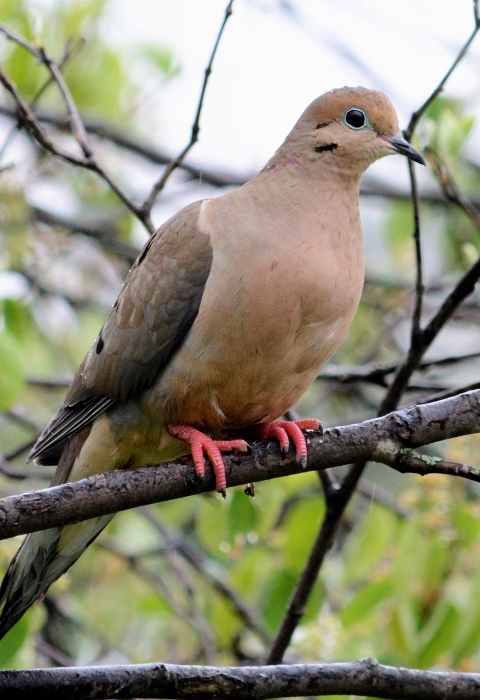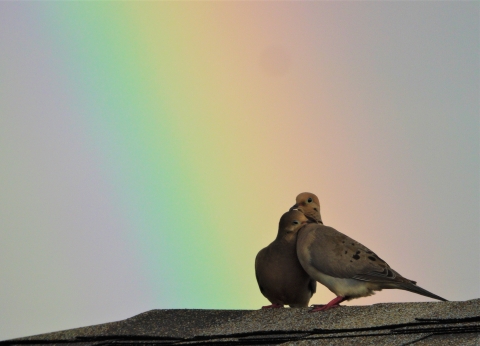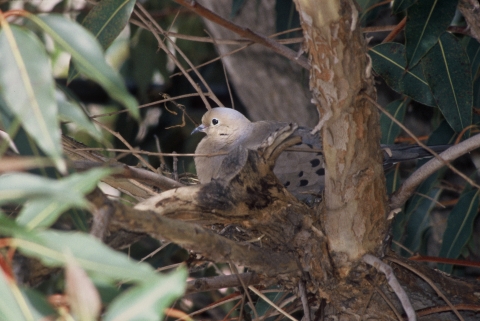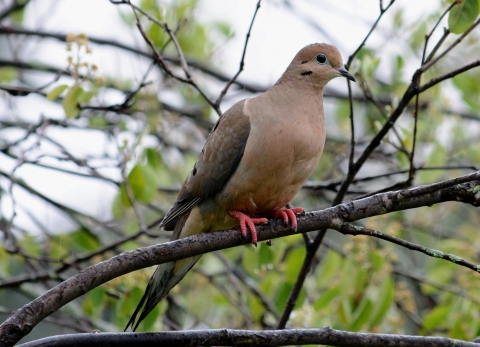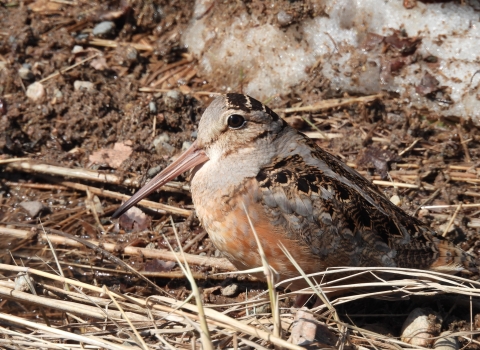Mourning doves are found in temperate areas of the United States, southern Canada, Mexico, Bermuda, the Caribbean, and Central America. They are known as the most abundant game bird in North America with an estimated U.S. population of 350 million birds. The birds live in open areas with scattered trees, especially crop fields, farmlands, yards, and forest clearings. They forage mostly on seeds and can drink brackish water. They’re often perched on telephone wires.
These birds form seasonally monogamous couples that can raise as many as six broods of two eggs each a year. Attract mourning doves to your yard by scattering seeds, particularly millet, on the ground or on platform feeders. Also plant dense shrubs or evergreen trees in your yard to provide nesting sites. Keep your cats inside.
Identifying Features
Mourning doves have a long, pointed tail which distinguishes them from other North American doves. They’re plump with short legs, a small bill, and a head that is small compared to their body. These birds are brown to buffy-tan with black spots on the wings and black-bordered white tips to the tail feathers.
Where can I see mourning doves?
First stop: check your backyard or local green spaces! Mourning doves are frequent visitors to backyard bird feeders and are commonly seen hanging out on telephone wires. If you're keen for an adventure, check out these National Wildlife Refuges:
- Grand Bay National Wildlife Refuge (Alabama): Mourning doves prefer open habitats for foraging, and the refuge has patches of grasslands and other areas where they may be seen.
- Piedmont National Wildlife Refuge (Georgia): While the refuge is primarily known for its pine-hardwood forests and efforts to restore red-cockaded woodpecker habitat, it also has open fields, forest edges, and roadsideswhere mourning doves are commonly found.
- Merritt Island National Wildlife Refuge(Florida): While best known for wading birds and waterfowl, this refuge also has upland scrub and open areas where mourning doves can be spotted.
- Savannah National Wildlife Refuge(South Carolina): This refuge offers open fields, grasslands, and agricultural areas where mourning doves frequently forage.
What makes these birds so special?
Mourning doves are special because they embody both beauty and resilience. Their soft, melancholy cooing is one of the most recognizable bird calls in North America, evoking a sense of peace and nostalgia. Despite their delicate appearance, mourning doves are strong flyers, capable of reaching speeds over 50 mph. They are also highly adaptable, thriving in a variety of habitats from open fields to suburban backyards. As seed eaters, they play a crucial role in their ecosystems by helping to disperse plant seeds. Their gentle presence and deep cultural symbolism—often associated with love, hope, and remembrance—make them a beloved species across the Southeast and beyond.
Mourning Dove Photo Contest
As part of our Bird of the Month series, we invite you to submit your photos of a mourning dove in a photo contest.
**In the file name of your photo, please include your first and last name, contact email address, and the location where the photo was taken. If these components are missing, we will have no way of contacting you if you win.**
Submissions will be judged by a panel of U.S. Fish and Wildlife Service employees. Once a winner is selected, they will be contacted via email and asked to sign a photo release form. This form protects the photographer's rights, ensures proper credits are given, and grants the U.S. Fish and Wildlife Service permission to share the photo on our social media channels. Please monitor your junk/spam folders towards the end of the month in the event that we reach out and our email lands there.
The winner will be announced publicly near the end of each month on our Southeast Regional Facebook and X (formerly known as Twitter) platforms.
A photo contest will occur each month for each featured bird species. At the end of 2025, all twelve winning photographs will be shared on our regional social media accounts.
